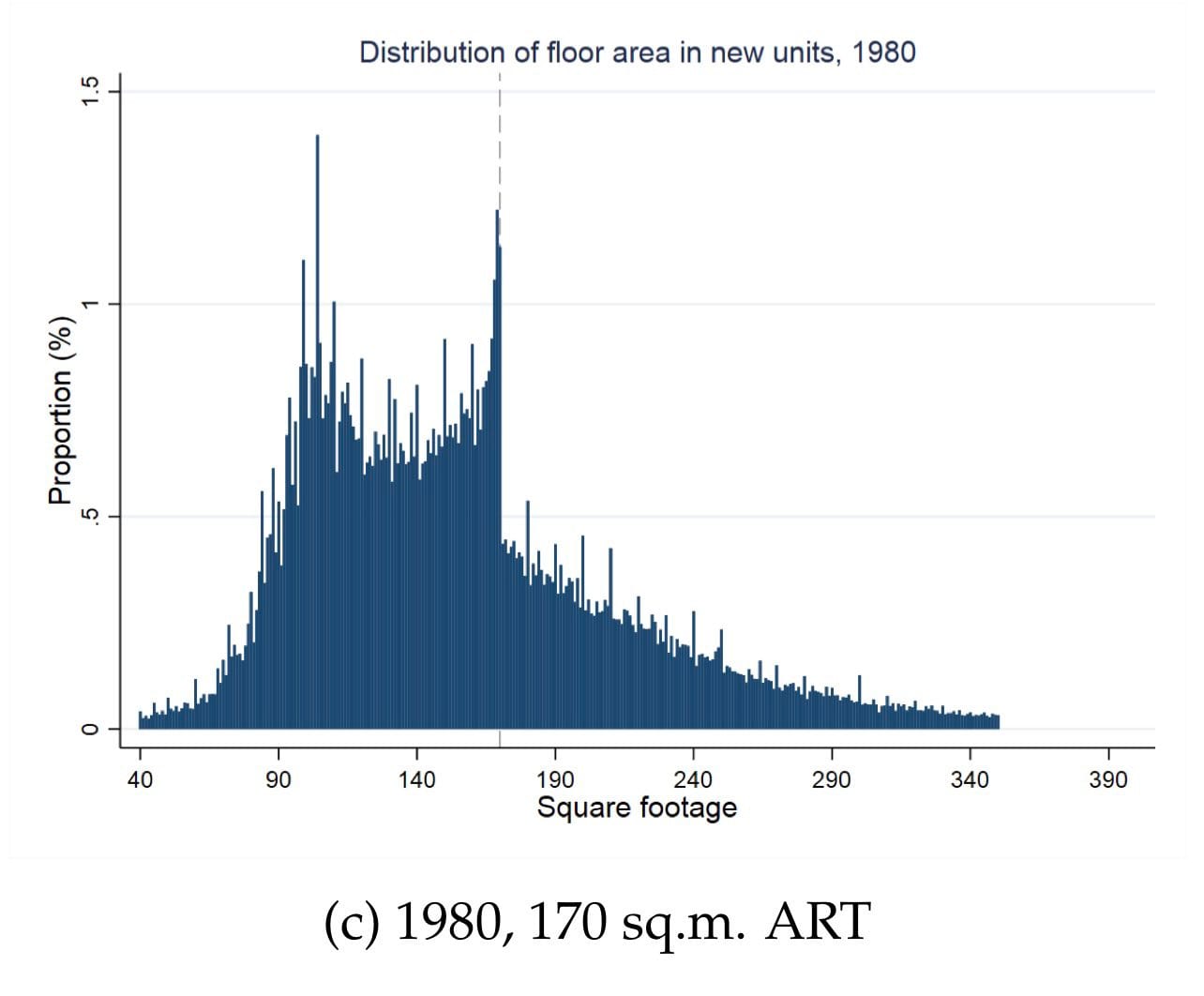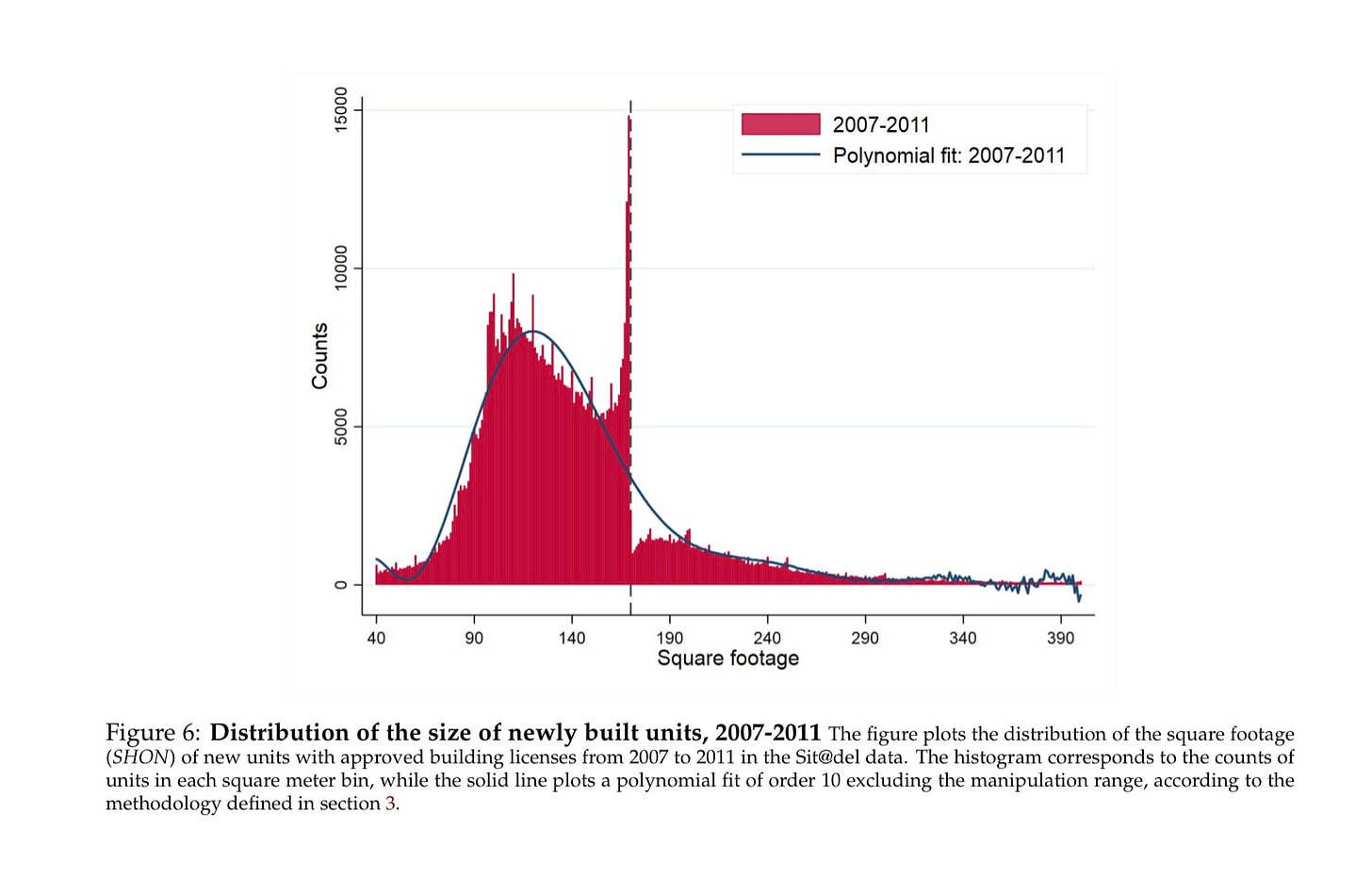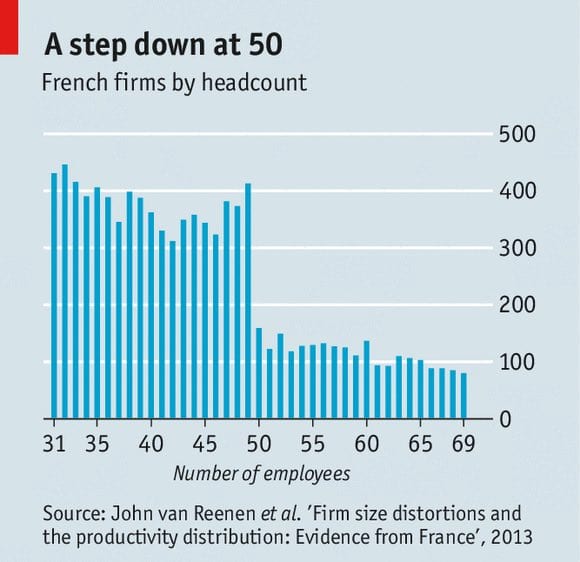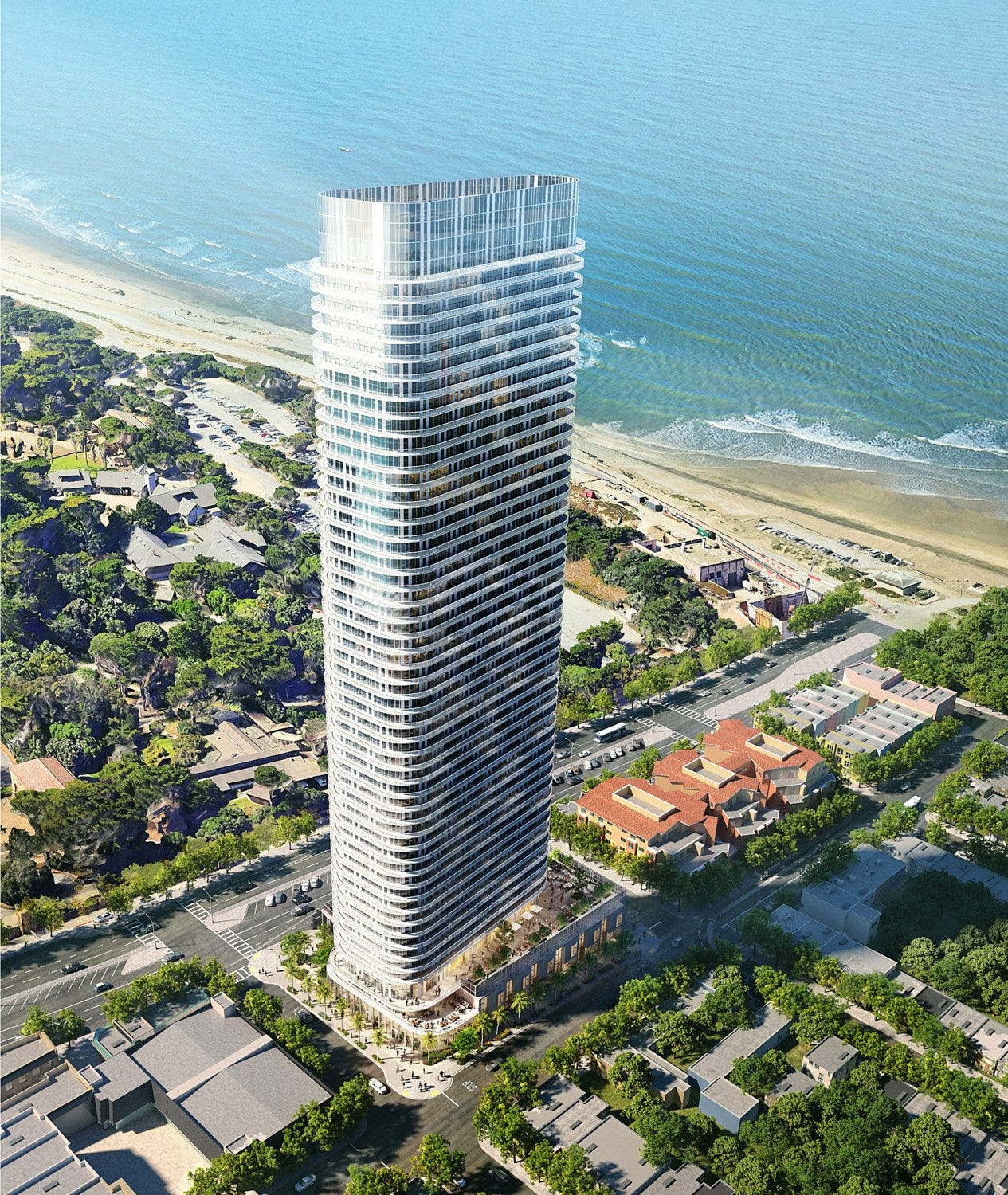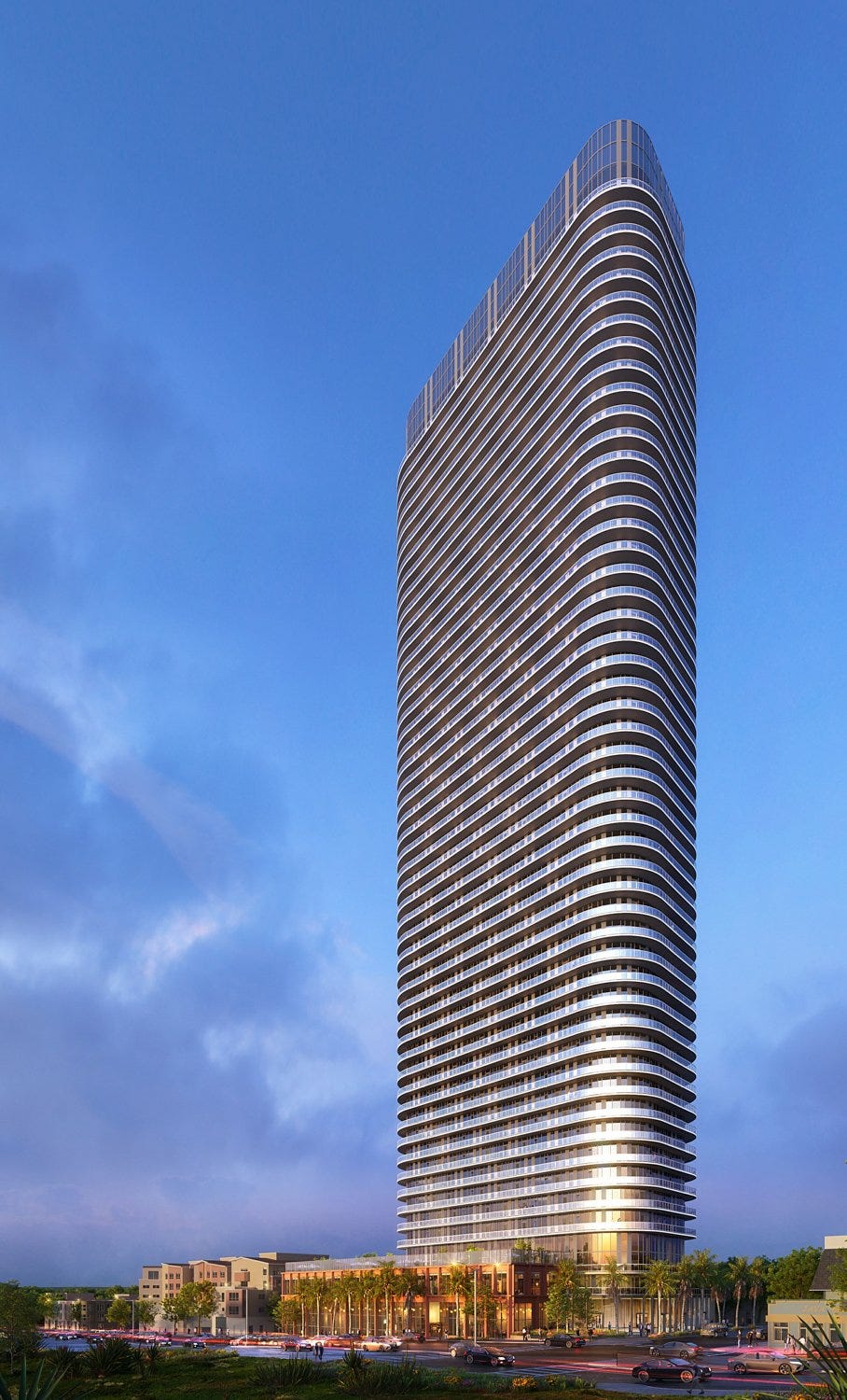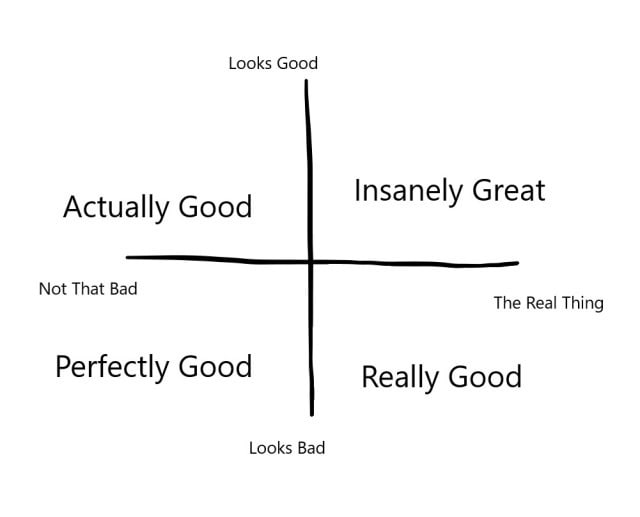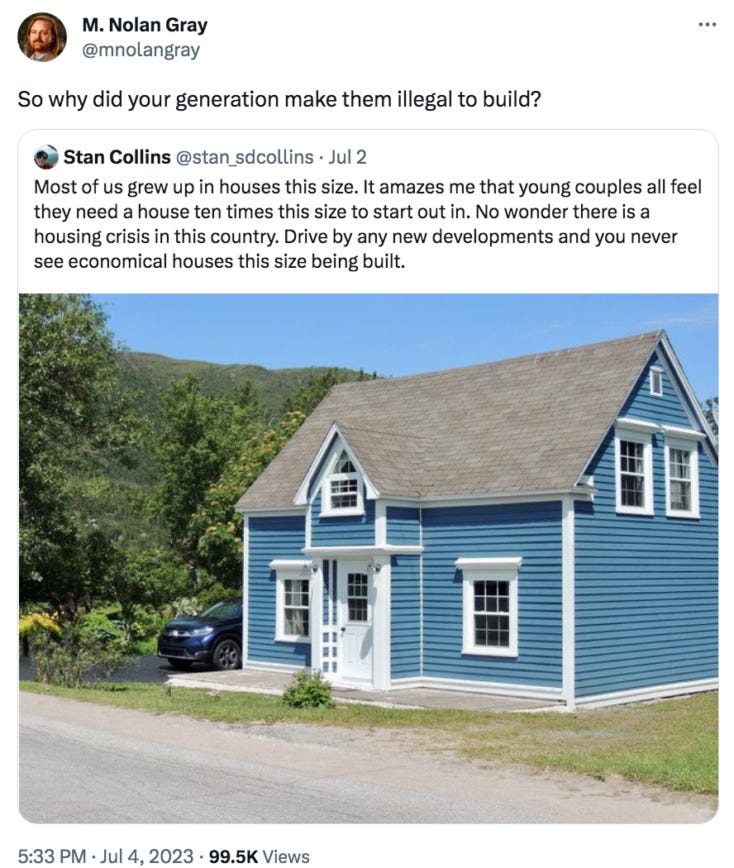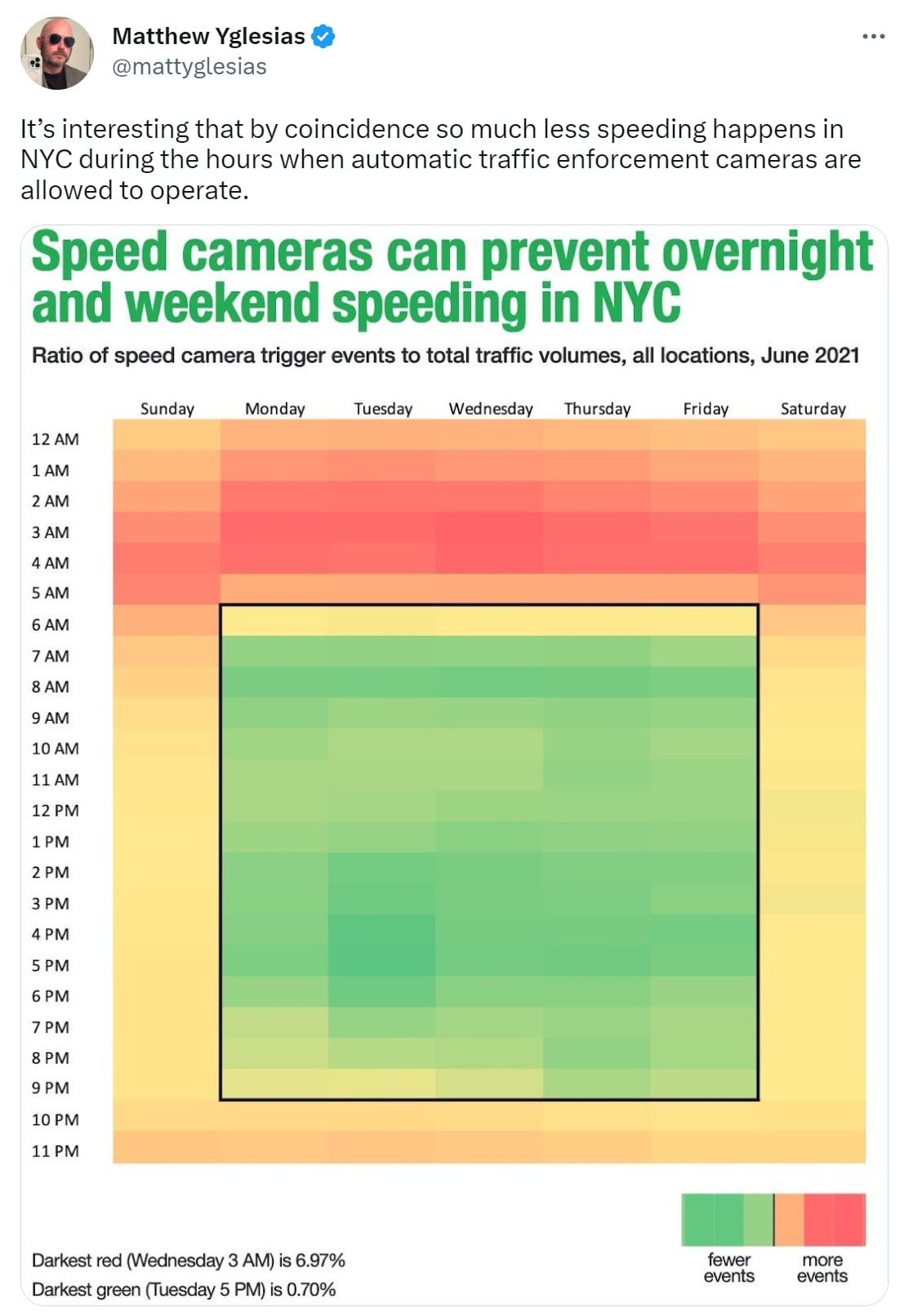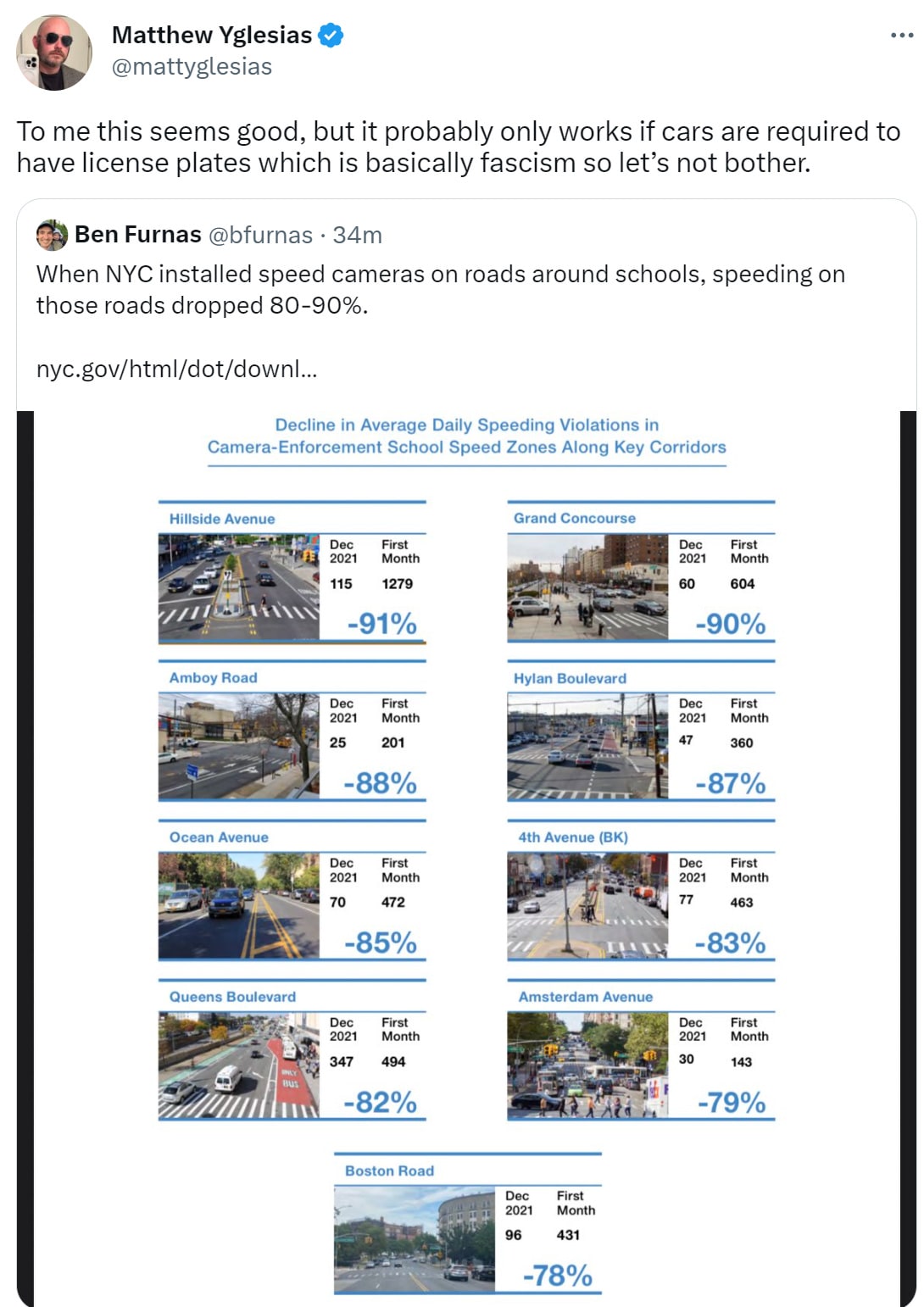Recently Tyler Cowen has doubled and tripled down on the idea that congestion pricing in Manhattan would be inefficient. I respond to that in the section “A Strange Take on Congestion Pricing in New York City.” For it is, indeed, a very strange take, claiming that it is good for the surplus produced by Manhattan if everyone involved spends their time stuck in traffic, so as to not impose a minor tax that will in some portion fall on visitor cars.
There also continues to be a lot happening in the ongoing struggle to build housing where people want to live, in order to let them live there, and to lower the cost of doing so, which is the main focus of this series and the rest of this post.
I pay attention to housing and look to find ways to build more of it because I continue to be a believer in the Housing Theory of Everything. When housing where people want to live is scarce, people can’t move to where they are happier and more productive, and landlords and homeowners can capture a large portion, perhaps most, of the surplus value the best places generate.
Balsa, whose website and other activities we hope to launch soon, will have housing as one of its central cause areas for this reason, and because I continue to see a lot of opportunity to improve the situation from many different angles. I also continue to endorse Balsa’s core principle, which is that if you want to be in a position to take a sane approach to humanity’s biggest problems and generally make good collective decisions, giving people slack and economic room to breathe, and the vision of a brighter future, is not optional.
Anyway, on to what’s happening.
More Supply Causes Lower Prices
Scott Alexander is updating that building more houses would indeed lower local housing prices, based on survey where people voted heavily for that result, and even more heavily if they had an econ degree, at which point 81% said lower prices, 14% not sure and 5% raise prices.
This is a general problem. Bryan Caplan points out that people more often think building more housing raises prices rather than lowering prices whether or not they own homes, with the median prediction consistently for zero change, and suggests this presents an opportunity to convince people out of NIMBY by pointing out this isn’t true. When I listened to focus groups and asked about housing, both homeowners and renters strongly preferred lower housing prices.
Higher Production Costs Cause Less Supply
YIMBY Alliance: In the late 1970s, France started to require an architect for every new home with over 170 sq m of floor space. Here is the distribution of new home sizes after the change:
170m^2 ~1830 square feet, so this is illustrative rather than a real problem. Also note that over time the distribution gets far more extreme rather than less.
If anything, I’m always surprised that the spike downward in such graphs, when the trigger takes effect, is relatively small, and there isn’t a ‘desert’ where almost nothing lives. In this case, it’s ‘you must use X service’ where X is potentially a useful service, so the obvious explanation is that it’s not so crazy to hire an architect at that size.
If you presume that otherwise the graph above would extend the lefthand curve throughout, this is potentially a substantial loss of housing area, but as errors go it seems a relatively harmless one. France is doing relatively well on housing and many other matters, not because it is making good choices, but because it avoids the biggest mistakes and does not botch the basics too badly, which is where a lot of the risk lies.
Related to that, Sam Bowman writes the excellent ‘Democracy is the solution to vetocracy’ and makes many excellent points about how prosperity is largely about taking care of abundance in basics like housing, energy and transportation.
But Ben Southwood has convinced me that France is rich because it gets the big things basically right. Housing supply there is freer: the overall geographic extent of Paris’s metropolitan area roughly tripled between 1945 and today, whereas London’s has grown only a few percent. Infrastructure is better: 29 French cities have trams, versus 11 here (likely one reason its second-tier cities are much more productive than Britain’s). It has nearly 12,000km of motorways versus around 4,000km here – and French motorways tend to be smoother and better kept (and three quarters are tolled, making congestion much less of a problem). Childcare is cheaper: about half the price per month, in part because they require half the staff. Energy is more abundant, as shown above. Because it gets those big four things right, it can afford to get a lot of other things wrong.
Thus, you can still do things like this…
Paul Graham: Many French labor regulations start to apply when companies have 50 or more employees. Here’s how the French respond. (via @s8mb)
…and you can still survive it. Note that there isn’t a spike at 49, despite the huge drop at 50. My model says this is because it is also impossible to fire people, and sometimes you need to hire people, so you want to avoid being too close to the edge. It is still odd this would so neatly cancel out, despite so many firms obviously declining to cross the threshold to 50.
Back to Bowman’s piece: The title is odd. Democracy reliably votes for and results in vetocracy. Where vetocracy is removed, democracies tend to fail, they need at least independent courts and usually other checks on power. What is being proposed here is instead direct local democracy over local decisions, in particular in the context of housing construction. The theory is that if locals know they have control over which projects move forward, and know they can do Coasian bargaining over details and compensation, then projects will move forward. It’s more like private property rights are the solution, rather than democracy.
How well such plans would work is a fact question, and for different types of projects and proposals it will work better or worse. For housing, it seems like it largely does work well. For other construction types, or things like child care or energy, seems harder, yet handing over the veto rights to a concentrated group seems great. You can bribe or bargain with a concentrated group. Or at least, the majority or even most of one. It seems key to only put things to a vote, so no one person can fully hold up things.
To Boldly Go
Builders remedy in Paulo Alto, 350 homes at 3997 Fabian Way, woo-hoo. A fine beginning. I still don’t know why you don’t go for 3,500 homes instead. Remember Trunchbell’s Law, never do anything by halves if you want to get away with it, once you are at war with the city might as well fight to win.
Renderings are going out for the 500’ skyscraper they’re trying to put out in San Francisco’s Sunset District, and I agree with Emmett Shear that it is gorgeous.
Ryan Peterson: I like that the renderings show a sunny day. So fake.
Boldest of all if true, ‘Cambridge to become Europe’s Silicon Valley — with 250,000 extra homes.’ This for a high value area that currently has ~150,000 residents. Amazingly great idea, they should totally do that, I will be shocked if they do it.
Building Housing as Progressive Policy
I find it very hopeful to hear many legislators in California being confused by San Francisco blocking house construction, and talking as if building more housing where people want to live is a progressive policy. Which it is in the positive sense, that it helps people. For some reason the particular 10 potential units of housing discussed at the link are drawing attention. If building housing is correctly thought of by progressives as progressive, and this does not cause a reflexive opposition to rise up, the path to victory would be clear. Even if there was a reaction, the places that most need to build housing are overall highly progressive.
Immobile Mortgages Immobilize People
Matthew Yglesias: These days everyone I meet who’s moving plans to keep owning the home they are vacating and rent it out, while renting a home from a former owner-occupant who is similarly attached to a low interest rate mortgage. This is all a totally reasonable response to the interest rate situation, just a bit annoying, and a reminder that housing markets are linked and it’s a mistake to over-silo your analysis of rental vs owned properties, single- vs multi-family or anything else.
Steven Klaiber-Noble: Canada has transferable mortgages and people still do this. I wonder if there is a measurable effect difference.
If I had to move for whatever reason, I would definitely not sell my current place, renting it out instead, whether or not I bought the new one, for exactly this reason, and also because of the high transaction costs. Even if I wouldn’t invest in the place otherwise, now that I have it and don’t need the capital, I am not about to walk away from an extremely favorable mortgage worth more than what I earn in a year.
There are some other countries that have solved this problem by making such mortgages mobile. When you move, you can take your existing terms with you, provided the new collateral qualifies. Or you can buy your mortgage back on the open market for its current value, locking in those gains, then get a new one elsewhere if desired. I do not have a good estimate of magnitude of impact but these both seem like very good ideas.
Let People Consume the Correct Amount of House
Study says that quality improvements in the housing of those getting benefits from SSI, SNAP and AFDC/TANF programs equate to a 35 to 44 percent increase in housing consumption between 1985 and today, as monthly housing expenditures rose from $692 to $1,341 for this group.
This sanity checks. Americans are consuming more and better housing across the board. It is good to consume more housing.
What is bad is being required to consume more housing, when you would prefer to consume less housing. This is the same as any other good. Many years ago, I offered this 2×2 of Good Things.
When your resources are highly constrained, as they are when you depend on government benefits, you want to max out on Perfectly Good. You’d love something Really Good if you can get it, but much better to focus on where you don’t yet have something good yet. The worst is when you are forced to pay a premium for Actually Good or even Insanely Great, straining your resources. So what if its market value is higher? What you need is a Perfectly Good roof over your head.
It is great that more better housing is being consumed. It would be better to enable those who don’t need the better housing to consume less of it, in order to meet other needs.
Some Australians splitting the rent via ‘hotbetting’ where each roommate has bed right during specific hours. Seems efficient. So often people spend a huge portion of their income on rent for a place they use for little other than sleep. Why not cut that in half? I mean, sure, better to build more houses where people want to live, but that’s crazy talk.
A common theme in housing is people buying or renting far more house than they use on a regular basis. A guest room is empty most of the time. Your own room and your common area are empty most of the time, with many people getting minimal use from both, and this expense often is a large percentage of take-home pay. There are a remarkably large number of (single) people who, if they had a place to sleep, even if it was at the office, would not otherwise need their own place. Yes, there are big advantages to having your own place, having a kitchen, having privacy and a place to take dates and so on, but the savings of not having that would allow one to get those services as needed and still come out ahead.
Is it straightforward to create enough housing that a small simple place is cheap enough to make sense anyway, even in desirable areas? Yes, definitely. But if we are not going to do that, and we are going to ban single-room occupancy and other such options, we should increasingly expect people to improvise other solutions, and welcome that.
Scott Sumner considers the reactionary impulse, as it relates to smaller house sizes, thoughts raised after seeing this response on Twitter:
In places that don’t have a severe shortage of land, building smaller houses so that they can be cheaper is rather perverse, a form of making something worse intentionally. Equally perverse is requiring larger ones, as a comment talks about, with HOAs apparently requiring as much as 5000 square feet (!!) or more. Who needs that much room? In places with scarce land, the smaller places make sense, and banning them has been rather perverse.
Worthwhile Housing Initiative
New York City Mayor Eric Adams wants to build. Without New York State’s help, it appears he will be unable to do so. The Governor wants to help, but she is getting nowhere with the state legislature, on almost every issue.
Robert Garcia introduces the People Over Parking Act, eliminating parking requirements within half a mile of public mass transit. This is great. The federal government can simply do this, eliminate zoning requirements? Let’s f***ing go.
I do worry about tying this to mass transit. First, the requirements are dumb even without mass transit, so why pass up a bigger win. Second, I can totally envision a world in which people say ‘we can’t build mass transit’ or even ‘we have to rip out our mass transit’ in order to avoid overrides on zoning requirements, including height limitations. I’m actually surprised I haven’t heard more talk about this yet.
It’s Worse
Vermont bans all new housing on 50% of its land. In theory there could be a grand bargain, where the places worth preserving are preserved, and the places people want to live are built twice as high, and everyone wins. This does not seem to be that. This seems like banning humans from half the state.
UK heavily restricts large new windows especially for the poor, this time not as the unintended side effects of real estate taxation. Otherwise, the rooms involved might get hot. It does not seem like the UK wants its island to contain humans.
Even if your home is already built and all you want to do is renovate? San Francisco has an interesting interpretation of the word ‘historic’ and of the right to improve one’s home.
Thomas Schiavone: What’s broken with SF? Here’s another example. To ensure that I could renovate my house, I had to prove it wasn’t historic. There are 3 designations for SF homes: historic, not historic, unknown. If unknown, you need to prove it’s not historic so that you don’t have a hassle.
So I had to pay someone to research my house to prove it wasn’t historic and then pay SF planning $3,233 to review our historic assessment. Just another way for the SF government /rules to slow down progress and drive up costs. I’m confident there’s a better way that costs less and takes less time.
Will share the history of the home in a future tweet. It’s kinda cool. Not worth the money I paid though. Note. Most of the housing stock is of status unknown. Any house before 1970 is in this unknown state unless proven otherwise.
Lee Edwards: This is kind of amazing. Like to move from unknown to historic you’d have to claim this indispensable part of our history was something that nobody knew about until this year.
Thomas Schiavone: Exactly.
Next up, they’re forcing me to upgrade the sidewalk in front of my house because there’s no tree there. There hasn’t been a tree there for a while (or ever)? I’m widening my garage 9 inches which apparently gives them the right to make me improve the public sidewalk.
Buildings that are unknown are by definition not historic. Maybe give up on the wider garage and buy a smaller car? Or move.’
We continue the farce of pretending to hide information from home buyers about the areas they are considering buying homes in. If you can afford a down payment on a home, you can also afford a phone with an internet connection.
Fun with Traffic, Transit and Mass Transit, Or Lack Thereof
This design was indeed not so good.
Rich Mintz: lol imagine designing an enormous public destination so that it’s illegal and dangerous to walk to
See also: it is impossible to walk into Newark Airport even though the AirTrain is immediately adjacent to a city neighborhood.
Rich Mintz: Port Authority: we support bicycling as part of the regionwide multimobility sustainable bla bla bla Also Port Authority: if you dare to bring your bicycle to our busiest passenger facility we will take you directly to prison.
My point isn’t that you should *have* to walk into MetLife Stadium. It’s that you should be *able* to. Hotels on two sides are less than 500 yards from the sports complex property and there’s enough consistent demand to walk there that lawyers made this one put up this sign!
You can walk to MetLife if you want to badly enough, even legally. There is a design problem, there is also a sign problem, or rather the thing where we tell people not to do it when they obviously should ignore the sign and do it anyway.
Did you know that automatically ticketing speeders greatly reduces speeding?
As a time-series experiment you get the same result.
The problem is that speed limits have for a long time been artificially low to adjust for the complete lack of enforcement, combined with the optionality this gives to police. It is often actively unsafe to drive the speed limit. What we should do, obviously, is not to stop requiring license plates or not enforce the law. We should enforce the law, and adjust the law for the expectation that it will be enforced.
The alternative is a situation where we get principled opposition to anything that aids in the enforcement of the law, as people declare that it is bad that cars are required to have license plates or someone might report when they conspicuously don’t have one.
One reason it costs so much to build subway stations is each sub group of worker needs its own underground space… because otherwise how would they coordinate who is responsible for cleanup?
In response on the accident in East Palestine, National Transportation Safety Board takes a firm anti-transport stance. They say that there is no such thing as an accident and their one goal is zero such events. If your safety plan is to never have an accident transporting hazardous goods, there exists one way to accomplish that.
Very clear steep decline in railroad accidents after railroad deregulation. Would have liked to have this control for total volume though. Quick attempts to Google this indicate there was not a similarly steep decline there.
NYC paying billions for a bus alternative to LaGuardia Airport. Seems worth it if you have no alternatives, still, wow. Also, they were going to build an AirTrain, the obviously correct thing to do, but that project got blocked by challenges including one that said that it obviously had an incomplete review because the review had only taken two years instead of the usual four, and the cost had ballooned to $2.4 billion. Still seems better than paying the same amount for bus service? Then again, that’s if they don’t alter the budget any further.
Uber detects (FT) if you refuse a disproportionate number of rides into low-income, minority or disadvantaged neighborhoods, and threatens to permanently deactivate your account if you continue.
Starting in January, Uber made it possible for drivers in the state to see the destination of a ride before deciding whether or not to take the business — part of an effort to strengthen its argument that its workers are “independent” and therefore should not get employee benefits.
But the company has confirmed that it has had to warn an unspecified number of drivers against avoiding areas that “largely comprised of low-income residents, minority residents and/or other residents who may belong to certain disadvantaged communities”.
They used to solve this problem by not telling you what the ride was at all, which they gave up in order to try and get around a different regulation. Now they need to stop people from following what they see as their incentives, since there’s a law against that too.
Uber could also… correct the incentives? Crazy talk. One driver warned complained they rejected trips as being too short, a common complaint. If some trips are clearly great for drivers at current prices, while others are bad for drivers at current prices, then the current prices paid to drivers are wrong, whether or not the ones paid by customers are wrong.
[Editor’s note: The original version of this was genuinely angry, was uncharitable and had poor tone. It has been edited to fix this.]
Tyler Cowen breaks with the allocation of scarce resources via prices. I notice I am profoundly confused, as is Scott Sumner, by the errors on display here.
Tyler’s core worry seems to be that Manhattan is overtaxed and undersupplied.
I don’t want Manhattan to be less crowded, even though it probably would make many Manhattanites happier and less stressed. I want Manhattan to be efficient for me and others, not just for the residents.
…
Parts of Midtown still feel tattered and nowhere near their former glory. That problem can be solved by more people, but of course those people need to be encouraged, not burdened by further taxes.
This is an argument for the subsidizing of Manhattan, which is instead disproportionally taxed. I support this. It is also an argument for building more in Manhattan. I am behind that as well.
It is strange to argue against an efficient tax that improves welfare, and that can and likely will be used to reduce other fees and taxes, on the grounds that extractive taxes from outside are already too high.
Some amount of congestion pricing in Manhattan is clearly efficient. It will reduce traffic density in Manhattan, which speeds up traffic, which has an ambiguous impact on total throughput even for the roads. It does not matter if it is ‘hard for this to raise demand’ if it raises throughput.
Note that time spent in traffic is not time spent productively being in Manhattan, time that is both highly productive and extremely expensive for both visitors and residents. People often pay hundreds of dollars to live in Manhattan, per day (yes, per day).
If you are so price sensitive that a $20 traffic fee is at issue, there is no place in the impacted zone you cannot reach via the subway, which has adequate spare capacity, or via other trains or even buses.
The efficient allocation of externalities will lead to a denser city, not a sparser one.
Tyler goes on:
To illustrate this point, note that the private sector does not always resort to the analog of congestion taxes. If a restaurant or a comedy club is very crowded on a Saturday night, they don’t usually raise the price to make the crowd go away, even if a naïve economist might expect that outcome. Instead, the restaurant regards a long wait as a sign of quality. They expect patrons to put up with the inconvenience to help create an air of buzz and excitement, and to boost interest in the longer run. Perhaps Manhattan should consider a similar response, albeit on a larger scale.
Tyler wants to build excitement for Manhattan via making people wait one line (in traffic) for it. The suggestion is that if the traffic gets really bad, people will treat this as a sign of quality of the underlying destinations. This is not how things work. People who consider visiting other cities with poor traffic, such as Atlanta or Los Angeles, use this as a reason to visit less rather than more.
Allocation via waiting in line is highly wasteful even in the best case. It is at best a bad equilibrium where people are reading destructive signals. When we see it happening, we should ask what has gone wrong, which in most cases is that people react rather badly when we allocate or suggest allocating such scarce resources via price, usually due to fairness considerations, and worries it will change the nature of the experience and view of the product, combined with a general reluctance to do it and the risks involved. None of which applies here.
Manhattan is already very much allocating its scarce real estate, and by extension most of the ways it produces its value since they require real estate, via price. That’s why everything costs more, and residential housing especially costs more, than elsewhere. Most of the tax incidence here will fall on the owners of complimentary goods that are allocated via price, and that thereby eat much of the surplus of living in Manhattan. This transfer is highly efficient. Why choose this particular place to not allocate via price?
Another problem for Manhattan is that the borough is increasingly the province of the wealthy. Struggling artists, or even many non-struggling artists, have been priced out, and that hurts the city’s longer-term cultural vitality. The composition of the residents matters, and the composition of the visitors matters too. Manhattan might do better to avoid complete gentrification and to keep some marks of its artistic and working-class backgrounds. But if expensive tolls mean that mainly wealthier visitors come, that will help the fancy jewelers and retailers and other high-price sellers, which in turn will nudge Manhattan more in a wealthy, gentrified direction. That is not what Manhattan needs right now.
This is again advocating allocating scarce resources other than by willingness to pay for them, claiming externalities, to the point of intentionally avoiding improving quality of services.
The starving artists themselves are directly subsidized by congestion pricing, because it is a form of price discrimination. They can and do use mass transit and walk around, so they can dodge the tax, and also recapture the reduced rents from others having to pay the tax on transportation.
The worry here seems to be that congestion pricing would improve quality of life, which would then raise costs more than this effect would lower it? That implies a very large efficiency gain.
The details of the toll plan have not yet been made public, but one document suggested a charge of $23 for a rush hour trip and $17 for a non-rush hour trip. That is on top of bridge tolls and increasingly expensive underground parking garages. Those prices seem high enough to deter many visitors from New Jersey, Connecticut or even from the city’s other boroughs. Do we really wish to encourage New York to evolve into having a bifurcated zone with a stiff entry fee and an all-too-obvious demarcation line and border?
Parking is already north of $20 per visit, and you have the option to use mass transit into the city, or use it after parking outside of the zone in question. To the extent that another $20 invalidates a trip to New York, and also you can’t get around that by taking a train, that trip was not so valuable on the margin.
I suspect that I could endorse a properly targeted version of congestion pricing for Manhattan, for instance, one that encouraged mass transit without discouraging density.
The money from a tax on alternative transportation goes to the MTA to be used to pay for mass transit, which currently struggles for ridership. How does this not subsidize mass transit? I would of course support subsidizing it more, and expanding service.
There are still some empty offices in Midtown. The limiting factor is zoning and building regulations blocking alternative uses and conversions, combined with a slow return to office and long lease times. A traffic fee will have minimal impact on this problem. Many employers would happily pay the fee, if necessary, to get the additional productivity from reduced traffic, and the amounts involved are minimal.
The Twitter critiques are remarkably literate.
Wotjek Kopczuk: I honestly don't get this one. The argument is that crowded Manhattan is a positive externality for the rest of the country - maybe, let's assume so - but it does in no way follow that Manhattan crowded *with cars* is a positive externality.
Sam (of Better Cities): Manhattan with fewer cars would be so much nicer on so many levels (less noise, less pollution, safer), it’s honestly pretty embarrassing that Tyler published this.
Wotjek Kopczuk: If you want to have even more good dining (to take one of his priorities), Manhattan without cars would make it possible to have more on-street dining for example (which is one of the good things that happened during the pandemic - another thing he brings up - to general acclaim).
Exactly. The limiting factor on Manhattan experiences is space, not traffic flow, because you can use subways and MetroNorth and NJ Transit for visitor flow, and cars eat otherwise valuable space while decreasing quality of life (and thus value of creating a dense hub). If you want more space, you can only get it from cars, or from changing zoning and other restrictions.
Even his MR coauthor got in on the act.
Alex Tabarrok: Congestion pricing doesn't raise prices. (On average and for all costs considered).
Tyler Cowen: It does lower the flow of traffic into Manhattan, which is what matters in a model with externalities.
This is the core claim I flat out do not get, that the externalities of driving a car into Manhattan are positive, actually, and we should want more traffic not less.
Tyler then doubled down on the points on Marginal Revolution, going so far as to say if you support congestion pricing in Manhattan you might as well be a NIMBY so you are at least consistent. He claims the subway is not a reliable method of getting around, whereas I find it actively more reliable than risking the traffic. He says it is ‘odd’ that critics did not mention the benefit that Manhattan trips would ‘become more elaborate,’ indicating he is thinking about a very different problem than everyone else.
Instead this makes clear where his focus lies:
On net, do you think our most important cities should be more or less dense? If you support YIMBYism, which surely does make traffic worse, have you not already answered that question? So either become a NIMBY or — better yet — be a little more consistent applying your intuitions about the net positive externality from Manhattan density. A simple way to put the point is that an export tax on your TFP factory is unlikely to be the best way to reduce congestion.
I have no idea why Tyler thinks this centrally is a prohibitive export tax on the TFP factory, rather than an efficient allocation of resources via price. The tax is on car transport, not exports.
Perhaps his love of travel is part of this? Except once more I would disagree. If I was visiting the city, as I did during my stay in Warwick, I would prefer to pay $20 to be able to move around, if it ensured good traffic. It is a small cost relative to my other costs to travel, and my time is valuable, as is reliability of transport.
Tyler then tripled down. He continues to claim that marginal trips into Manhattan have such large externalities that they dominate any other efficiency gains. This is in addition to increasing the extractive taxation on residents of the country’s best TFP factory.
I simply do not understand how one can think this is the primary thing going on.
Tyler says: The point here is to have consistent views across YIMBY and a congestion tax. And if you think we should reallocate vehicle space more toward residents and away from visitors, please make a comparative argument to that effect. Repeating observations about crowding and externalities is not an argument on either of these questions.
No. The reason for YIMBY and the congestion tax is that both are efficient allocations of scarce resources to maximize their productive use and the combined value of what is on offer, and to ensure it gets allocated to those who value it most. Economics 101. Building more in Manhattan is efficient. Having more throughput in our most crowded streets is efficient. Allocating space away from cars is efficient. Moving people into subways that have a lot of spare capacity is efficient.
I have no idea how one can think this is overwhelmed by the surplus caused by the loss of marginal trips into the city that the visitor wouldn’t pay an extra $20 for and also won’t happen if they need to use alternative transportation options. What is so valuable about these trips, which are themselves greatly improved, including their productivity, by better traffic?
I remain deeply confused.
It Gets Better
Governor Jared Polis of Colorado signs bill prohibiting growth caps, repealing existing ones in Lakewood, Golden and Boulder. A shame about the broader bill.
At least we have a $2.3 billion MSG sphere in Las Vegas.
Joe Pompliano: The $2.3 billion MSG Sphere in Las Vegas is almost ready.
• 366 feet high
• 516 feet wide
• 18,000 seats
• 164,000 speakers
• 580,000 sq ft of LED panels It is the world’s largest sphere and will officially open this September with a U2 concert.
I am unconvinced the economics make sense here. Presumably it depends on drawing people to the casino. I cannot deny that it is awesome. The externalities seem broadly positive, and a quick search provided no evidence of a government subsidy, so this is presumably a big win, unless you think ‘get people to come to Las Vegas’ is a major negative.
